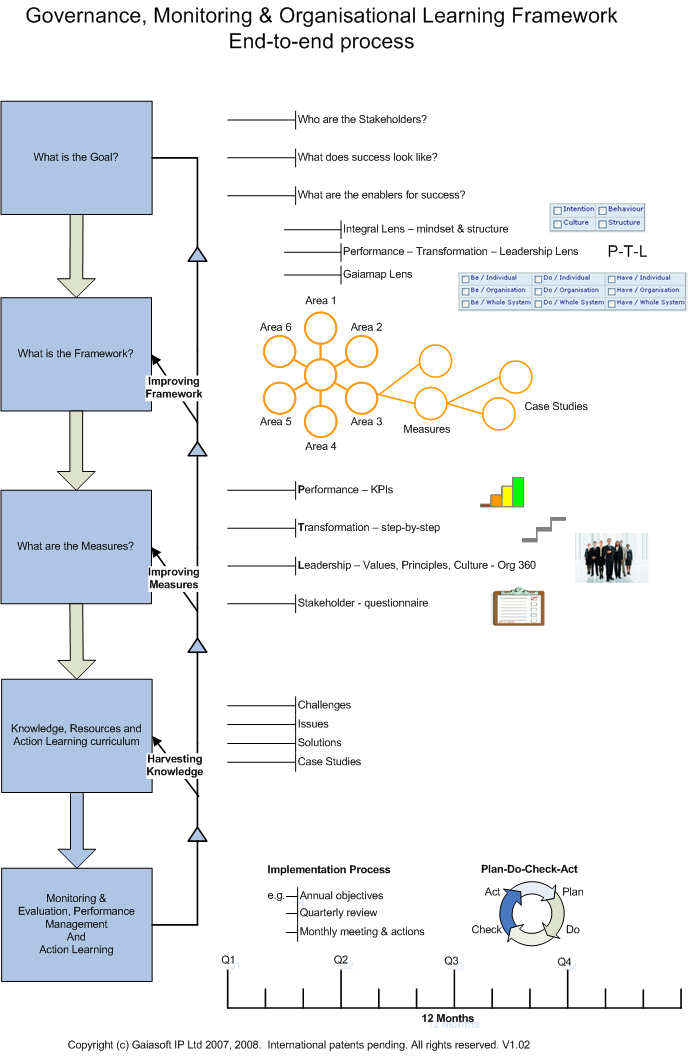Governance, Monitoring & Organisational Learning Framework
In the MIDIR Approach Part A and Part B indicators are to be developed through a series of steps. This approach has been extended to provide a generic monitoring methodology whereby generic indicators can be developed for sustainability, resilience and sustainable development. MIDIR’s general end-to-end process uses and builds on Gaiasoft’s Organisational Learning and Governance Framework represented in the following figure:
Tip! To see this image full size - save it to your computer, by using the controls which appear when you place your cursor over it, and display it in an image viewer.

Figure summary:
The previous figure summarises the process for developing and applying a template or “pattern library” which can be used to drive sustainability, sustainable development or resilience through accountability, monitoring, action management and learning.
The previous figure summarises the process for developing and applying a template or “pattern library” which can be used to drive sustainability, sustainable development or resilience through accountability, monitoring, action management and learning.
Following are the steps from Figure with supporting notes.
What is the goal?
- Identify the stakeholders, who are the interested parties?
- What does success look like in reality? Ensure this is clear.
What is the framework?
- What are the enablers that will make success happen?
- Refer to success stories, solutions that are already working, the so called ‘positive deviants’ which we refer to as ‘positive proof points’. Use methodologies like the Integral Model, Key Performance Indicators (KPIs), process tracking, survey tools and Gaiamap (Be/Do/Have at the Person, Organisational and Whole System levels). Look through the ‘Lenses’ to identify enablers, measures and knowledge.
- Define the Areas which equate to the high level success enablers and develop a hierarchy or web of goals, success factors, knowledge and success stories.
What are the Measures/Indicators?
- Leadership drives transformation drives performance. Define indicators to give a balanced view of performance, transformation and leadership. Refer to other lenses to develop necessary and sufficient measures within the framework.
- Survey stakeholders; stakeholder involvement was identified as one of the most important elements for a successful risk governance process. Use a questionnaire as a data collection for the Measures.
Knowledge, Resources and Action Learning curriculum
- Tap into the knowledge and expertise of others. Use examples provided by Positive Proof Points. Use Action Learning as a highly effective approach to build capacity through learning by doing.
Monitoring and Evaluation, Performance Management and Action Learning
- Use M&E and Performance Management to support personal accountability. Use a performance management process to drive actions and results with a Plan – Do – Check – Act cycle.
Continuous Learning
- Ensure continuous learning through feedback and improvement of the goal, framework, measures, knowledge base and performance management process. Learning is accelerated because any new Positive Proof Point in a member of a collaborating network is shared and available to other members of the network.
For detailed information please download the research report on M&E for Development, Sustainability and Resilience.

